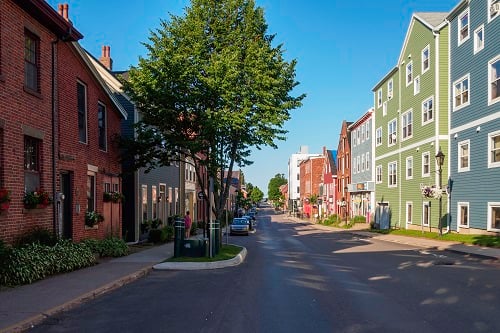Roughly two-thirds of younger residents cite increasingly pricey neighbourhoods

When it comes to affordability issues regarding housing and quality of life, most attention has been placed on the quality of life within Canada’s largest metro areas. However, a new study on affordability released by Dalhousie University shines the spotlight away from the major urban centers and gives attention to four smaller Atlantic Canadian cities that rarely get considered in national discussions of affordability: Charlottetown, Halifax, Moncton, and St. John’s.
The study, authored by sociology professor Howard Ramos and sociology PhD student Emma Kay, was conducted from May through July of last year and sought to assess the changes Atlantic Canadians observed in their cities and neighbourhoods during the past five to 10 years. On the whole, the majority of respondents believed the economic change in their cities was “for the better” – except in St. John’s, where 55% of residents felt it was “for the worse.”
When focused on their individual neighbourhoods, the majority of survey participants reported no change in the overall economic state, perceptions of local wealth and employment opportunities, but perceptions of affordability were generally negative due to the perception of declining affordability.
However, in terms of demographic measurements, 67% of respondents between the ages 18 to 34 years said that their neighbourhoods became less affordable over time, versus 54% of those ages 65 years and older. In a column published on The Conversation website, the report’s authors pointed out that students in Halifax and Charlottetown have been forced to “scramble for apartments amid concerns of a housing shortage” and urged policymakers and communities to “pay close attention to concerns expressed by young people because they represent the very demographic Atlantic Canadian cities are trying to attract because they drive economic growth.”
The report also determined a perception split based on education levels, with 26% of those with less than a high school education and 67% of those with a professional or graduate degree citing negative change in their neighbourhoods. Immigrants were more likely than non-immigrants (64% to 57%) to indicate that their neighbourhoods had become less affordable compared to five to 10 years ago.
Within the four cities, 75% of Charlottetown residents lamented that their neighbourhoods are less affordable compared to five to 10 years ago, compared to 63% of Halifax respondents, 46% of St. John’s residents and 43% of the Moncton respondents. And while St. John’s residents expressed the most negative views on economic changes in the city, 24% of those surveyed believed their neighbourhoods became more affordable over time – a higher proportion compared to the residents in the other three cities.
Approximately three-quarters of the survey’s owned their homes and 69% reported living in single detached houses. The average age of the respondents was 58, with 57% stating they were married, 4% identifying as minorities, 7% identifying as immigrants or refugees and 2% identifying as Indigenous. The median individual employment income reported by participants was between $40,001 and $60,000, with 53% reported spending one-third or more of their incomes on housing and related expenses.



